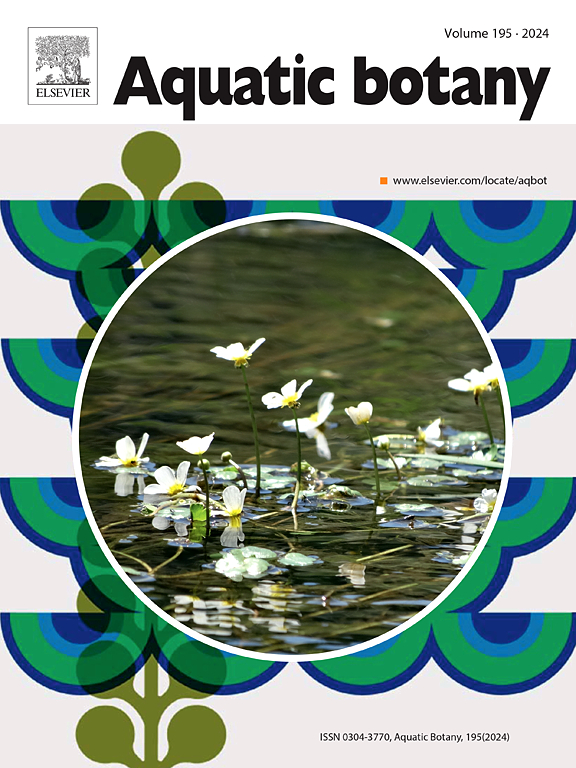Ecological consequences of breakwater and revetment structures on the Baltic Sea Coast in Germany
IF 2.6
4区 生物学
Q2 MARINE & FRESHWATER BIOLOGY
引用次数: 0
Abstract
Hard structures, such as breakwaters and revetments, while effective at mitigating coastal erosion, induce significant ecological alterations in terrestrial and aquatic environments. To study these effects, field investigations were performed along the Baltic Sea coast in Thiessow, Germany, highlighting breakwaters, a revetment and comparing them to an unprotected area. For this purpose, floristic mappings were carried out along transects on beach and dune. Algae scratch samples and sediment cores were taken, which were also used for nutrient analyses, each with a replicate number of n = 5. Sediment analysis revealed changes in grain size, sorting, water content, organic matter, and nutrient concentrations in areas influenced by breakwaters and revetments. These differences are less distinct on beach and dune. Finer sediments and increased organic content were observed in shallow waters near the breakwaters, while coarser sediments dominated near revetments. Vegetation surveys showed less dune plant species on the breakwater site and a pronounced shift towards ruderal plant species. Revetments eliminated terrestrial vegetation entirely due to their impermeable structure directly on the beach. The introduction of hard substrate in soft-bottom habitats in the shallow water favours the settlement of macroalgae, whereby there is only a weak zonation with regard to the distribution of species on the structures. Meanwhile, no seagrass meadows were recorded near the breakwater which could indicate supressing effects. These findings underscore the ecological consequences of hard coastal protection and emphasize the importance of integrating ecological considerations into coastal protection strategies to balance shoreline stabilization and preservation of natural habitats.
德国波罗的海沿岸防波堤和护岸结构的生态后果
硬结构,如防波堤和护岸,虽然有效地减轻海岸侵蚀,但会引起陆地和水生环境的重大生态变化。为了研究这些影响,在德国Thiessow的波罗的海沿岸进行了实地调查,突出了防波堤和护岸,并将其与未受保护的地区进行了比较。为此,沿着海滩和沙丘的样带进行了植物区系映射。采集藻类划痕样品和沉积物岩心,也用于营养分析,每个重复数为n = 5。沉积物分析揭示了受防波堤和护坡影响地区的粒度、分选、含水量、有机质和营养物质浓度的变化。这些差异在沙滩和沙丘上不那么明显。防波堤附近浅水沉积物较细,有机质含量增加,而护岸附近沉积物较粗。植被调查显示,防波堤站址沙丘植物种类减少,向野生植物种类明显转变。护岸完全消除了陆地植被,因为它们的不透水结构直接在海滩上。在浅水软底生境中引入硬基质有利于大型藻类的定居,因此在结构上的物种分布方面只有一个微弱的分带。同时,在防波堤附近没有记录到海草草甸,这可能表明抑制作用。这些发现强调了硬海岸保护的生态后果,并强调了将生态考虑纳入海岸保护战略以平衡海岸线稳定和自然栖息地保护的重要性。
本文章由计算机程序翻译,如有差异,请以英文原文为准。
求助全文
约1分钟内获得全文
求助全文
来源期刊

Aquatic Botany
生物-海洋与淡水生物学
CiteScore
3.80
自引率
5.60%
发文量
70
审稿时长
6 months
期刊介绍:
Aquatic Botany offers a platform for papers relevant to a broad international readership on fundamental and applied aspects of marine and freshwater macroscopic plants in a context of ecology or environmental biology. This includes molecular, biochemical and physiological aspects of macroscopic aquatic plants as well as the classification, structure, function, dynamics and ecological interactions in plant-dominated aquatic communities and ecosystems. It is an outlet for papers dealing with research on the consequences of disturbance and stressors (e.g. environmental fluctuations and climate change, pollution, grazing and pathogens), use and management of aquatic plants (plant production and decomposition, commercial harvest, plant control) and the conservation of aquatic plant communities (breeding, transplantation and restoration). Specialized publications on certain rare taxa or papers on aquatic macroscopic plants from under-represented regions in the world can also find their place, subject to editor evaluation. Studies on fungi or microalgae will remain outside the scope of Aquatic Botany.
 求助内容:
求助内容: 应助结果提醒方式:
应助结果提醒方式:


